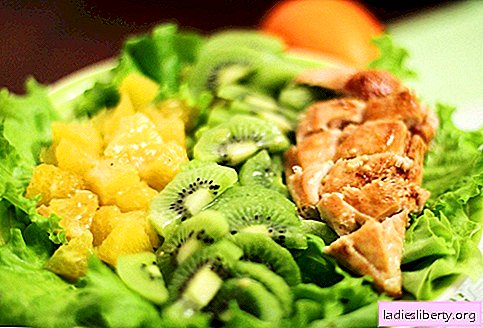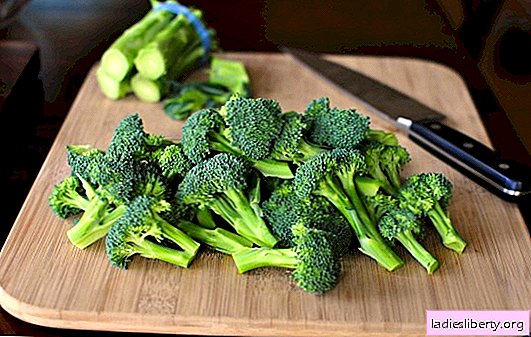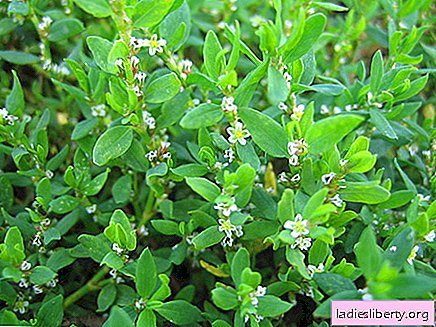
Zucchini refers to pumpkin crops. They were introduced to Europe in the 16th century along with other plants from the New World. Initially, only seeds were consumed, but after the vegetable spread throughout Italy, salads were prepared from the zucchini, its flowers and fruits began to be stuffed and used to prepare other hot dishes.
Types and classification of squash
The high yield of zucchini and its survival contributed to the rapid spread of this crop in regions with a cold climate. Since the 19th century, vegetable marrows have been classified according to three main breeding groups:
• Western Europe;
• Asian selection;
• Of Eastern Europe.
The selection varieties of Western Europe are characterized by a thin peel of a fruit of white or yellow color and a dense pulp with a rich fresh taste. Such zucchini can be consumed raw. Zucchini also belong to this group. This is a kind of green zucchini. Usually zucchini have an oblong shape. There are practically no seeds in the fruit.
Zucchini Asian selection have an unusual color. Depending on the variety, the color of the fruit may be orange, white, yellow or purple. Hybrids of striped color are found. Their shape is mostly round, like a pumpkin. Their weight does not exceed 1.5 kg.
Among the varieties of selection of Eastern Europe, zucchini with thick skin and dense pulp is most often found. A large number of seeds are formed in the fruits. These varieties have been specially bred for countries and regions with a cold climate.
There is a melon and bush variety of this culture. The best varieties of zucchini, as a rule, are bush. These plants are compact, so they can be grown on a small area. Melons and gourds provide a large number of lateral shoots, so they require more space than a bush variety.
Breeders bred zucchini hybrid varieties that do not require pollination, that is, parthenocarpic. The yield of such plants is significantly higher compared to varietal zucchini. Hybrids do not have hollow flowers, so they give a stable crop.
The fruits of some varieties are best consumed fresh. There are varieties that are grown specifically for flowers. Buds are used in the preparation of French delicacies. There are zucchini, which are ideal for heat treatment and preservation. Such varieties are called technical.
The best varieties of zucchini for fresh consumption
The best varieties of zucchini for the preparation of salads include the Yasmin F1 variety. Zucchini is ripe, its fruits are deep yellow in color. The pulp of a vegetable marrow is creamy white, dense and juicy. "Yasmin F1" has a pleasant rich taste. Seeds are not formed. The peel of the vegetable is thin.
The length of the fruit is 20-22 cm, the diameter is 6-8 cm, and the average weight is 490 g. The surface of the zucchini is smooth and even. Some fruits may warp slightly. An undoubted advantage of this variety is that its zucchini do not outgrow, so you can leave vegetables on the plant for up to five days.
The variety is a bush type. The plant is compact, low. It forms powerful dark green leaves with small white stains. The shape of the leaves is rounded. The edge of the sheet is divided into four to five segments.
Zucchini gives an excellent crop on slightly alkaline soils. It can be grown both by sowing in open ground, and in seedling method. The advantage of the variety is its cold resistance. It is adapted to the climatic conditions of central Russia.

the best varieties of zucchini: photo varieties "Yasmin F1"
White-fruited variety of salad squash - "Long White Bush 2". Its fruits are pear-shaped medium size with a thin white skin. Early ripening of zucchini. You can start harvesting in 40-50 days after the appearance of the first seedlings.
Zucchini is not suitable for heat treatment, in which a large amount of juice is released from vegetables, and their flesh becomes loose. Juicy fruits are best consumed fresh.
The shape of the bush is melon, the plant forms small lashes that do not grow more than 0.8 m in length.
The advantages of the variety are the compact size of its fruits, good transportability and a long shelf life. At room temperature, zucchini retain their palatability and do not spoil until three months. They contain more vitamin PP than other fruits.

zucchini hybrid "Long White Bush 2"
Grade "Black handsome F1" refers to the best varieties of zucchini for salads. Vegetable belongs to a subspecies of zucchini. There are practically no seeds in it. The taste of zucchini is refreshing.
The size of the fetus depends on how long the zucchini has been on the stem. The largest fruits can weigh up to 2.5 kg, but it is better to cut the zucchini young. Ready to collect zucchini usually reaches 20 cm in length.
The shape of the fetus is elongated and even. Overgrown fruits are not deformed. The peel is green; as the zucchini grows, it becomes almost black. Young zucchini contains a large amount of vitamin C.
The plant is bushy and compact. Its height is 60-70 cm, and its diameter is up to 1 m. The leaves are large, even, their color is dark green with white pale patterns. Zucchini loves sunny places. It can tie fruits at a temperature of 10 ° C, but does not withstand frosts.
Overview of the best varieties of zucchini for cooking preserves and hot dishes
The best varieties of zucchini can be attributed "Tondo di Piacenza". It is ideal for stuffing, as it has a round shape. A thin green skin with small white spots makes the fruit of this plant looks like a watermelon. The pulp of the fetus is white and dense. There are practically no seeds in the zucchini. The diameter of the ripe fruit reaches 10-12 cm. Early ripening. Harvesting can begin 60-65 days after planting seedlings in open ground.
The bush is compact, medium-sized. Its diameter is 50 cm. The leaves are relatively small. Their length does not exceed 15 cm. The color of the tops is light green with small bright spots.
This is a variety of Italian breeding, so it is not suitable for cultivation in the northern regions. Plants are well adapted to the southern climate. It is better to plant seedlings in a place lit by the sun. However, Russian breeders managed to regionalize this variety, but zucchini has not yet received wide distribution.

photo zucchini "Tondo di Piacenza"
The best varieties of zucchini can be attributed "Gribovsky 37". The variety is zoned and adapted to all climatic zones of Russia. The fruits are used to make squash caviar and are great for preservation. Their shape is elongated. The color of zucchini is pale green. The mass of the fetus, ready for collection, is 0.5-1.3 kg.
The plant begins to bear fruit 40-60 days after planting seedlings in the ground. The variety is considered mid-season. "Gribovsky 37" is resistant to many fungal and viral diseases. To ovate, plants need cross-pollination. From 1 planting area, you can collect up to 8.5 kg of crop.

The best varieties of zucchini: photo varieties "Gribovsky 37"
One of the best varieties of zucchini for cooking stews and frying - "Squash tree F1". Its fruits are light green, elongated. Seeds not formed. The pulp is white. The advantage of the variety is early maturity and fruit ripening. The length of the zucchini is 10-14 cm.
The hybrid got its name because of the tall bush. The plant forms large leaves. Parthenocarpic hybrid, ovary forms on each flower.

The best varieties of zucchini: photo varieties "Squash tree F1"











